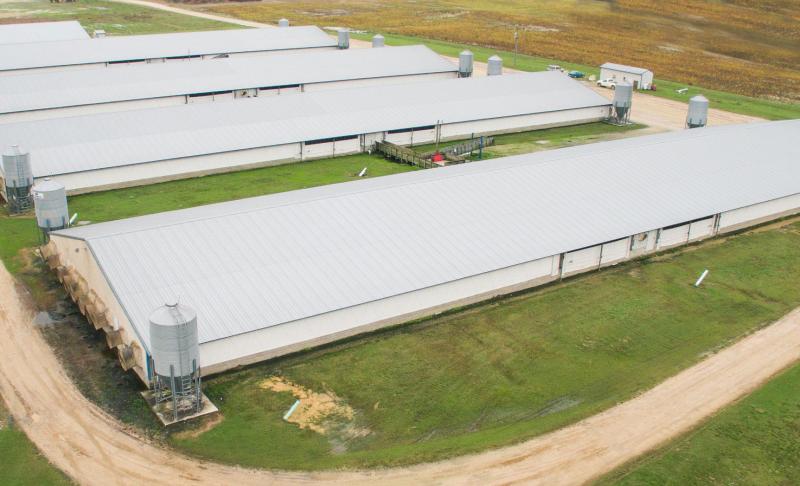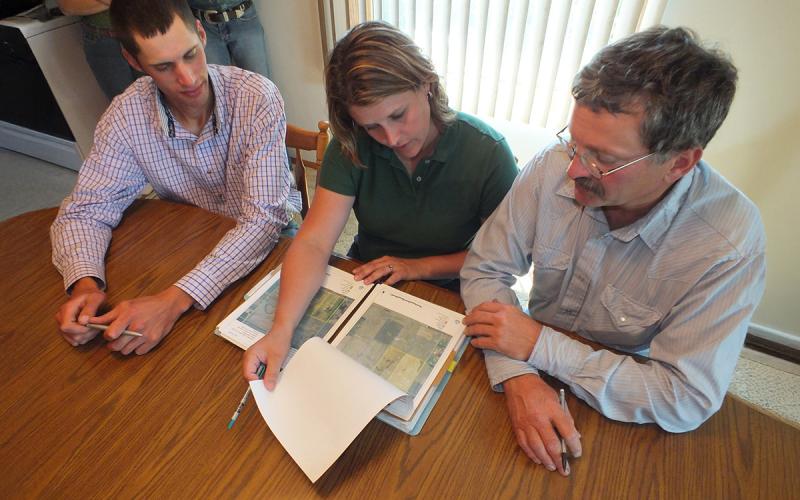
Written with contributions by Ryan Samuel, former SDSU Extension Swine Specialist.
In abnormal situations, like with the packing plant closure we’re currently dealing with, pork producers may need to “hold” their pigs past normal marketing dates in order for other processing options to open up. We can accomplish that in two ways: altering internal barn environment and changing diets.
The following information is from a paper developed on April 13, 2020 by Drs. John Patience and Laura Greiner at Iowa State University. However, regardless of which option you chose, animal well-being must always have first priority.
Nutritional Changes
- Substantially increasing the fiber level of the diet will reduce energy intake due to gut fill, which will then slow growth rate. This can be done by adding higher levels of DDGS, soy hulls, wheat midds, or corn germ meal to the diet. The total Neutral Detergent Fiber (NDF) content of the final diet needs to be at least 16% but preferably >20% to slow down growth rate.
- Areas of concern are:
- Soft bellies with higher levels of DDGS.
- Potential mycotoxin issues with wheat midds and DDGS depending on the year.
- Carcass yield may be decreased by 1%.
- Areas of concern are:
- Reducing crude protein and essential amino acid (AA) will reduce feed intake and gain. However, it must be a reduction of at least 30-40%, and tryptophan appears to be the most important amino acid in reducing feed intake.
- Concerns to consider:
- Soybean meal also provides essential minerals so may need to increase mineral supplementation to meet the animal’s requirements.
- If on a low protein/AA diet for an extended period of time, % fat may increase.
- Concerns to consider:
- Using anhydrous calcium chloride (a salt) to reduce feed intake and growth. While this is a very effective method to reduce feed intake, it is a fairly technical topic so you must work very closely with your nutritionist on this since you’ll be determining the dietary undetermined anion concentration of the feed.
- Concerns:
- Need a qualified nutritionist.
- Pig response can be variable.
- Should not be used more >3-4 weeks since calcium chloride can weaken bones.
- Concerns:
- Reducing dietary salt levels. While this could reduce feed intake, we really don’t know how much to reduce the salt level, so this strategy is risky and not recommended. Also, could get an increase in aggressive behaviors like tail-biting.
- Unpalatable feed additives. This is a “buyer beware” situation. We don’t have any data on these types of products, and therefore can’t recommend them.
Altering Internal Barn Environment
- Restrict feed delivery to the pigs. This can be accomplished by tightening feeder adjustment or turning feeders on and off. However, it does take extra labor and has the following concerns.
- Concerns:
- Greatly increases the risk of fighting and tail-biting.
- Greater weight variation since dominant pigs eat their fill, and submissive pigs get little feed.
- Can cause Out-of-Feed events, which could result in gastric ulcers and ileitis.
- Concerns:
- Increasing room temperature. This is done by reducing ventilation rate. For every 2oF above the pig’s thermoneutral zone, feed intake will be reduced .1 lbs/day. Also, humidity by itself will decrease feed intake (a 10% increase in humidity will lower feed intake 1-2%).
- Concerns:
- If ventilation rate is reduced too much, could have too much humidity and gas levels in the room/barn.
- Needs to be safe for pigs AND people.
- higher temperatures need to be maintained 24 hrs/day.
- Concerns:
- Crowding animals. This will happen normally as the pigs continue to grow past their target weight. However, due to its potential impact on animal well-being, it is not recommended.
- Restricting water supply. Water intake drives feed intake so anything that decreases water intake will also decrease feed intake. Reducing water pressure to waterers or placing timers on them will reduce water intake, but there is a large risk so this method is not recommended.
- Concerns:
- Compromises animal well-being, especially in summer.
- Increased fighting, social vices, and mortality.
- If severe water restriction, could lead to salt poisoning.
- Concerns:
Summary
There are multiple methods to reduce pig feed intake and growth. However, there are benefit and risks to each method, and the most important consideration must always be pig well-being. Also, producers must do a detailed, economic analysis on the method(s) they are considering making sure it is the best option for their operation. Finally, producers need to ensure that any production practice utilized maintains their ability to follow production standards, guidelines, laws, etc. to which they are subject and/or governed by, and in particular, to maintaining animal well-being.
For more specific details, questions, or to request a complete copy of the paper, please contact your SDSU Extension swine specialists Robert Thaler or Ryan Samuel.


